If you want to enjoy beautiful, fragrant flowers each year and draw pollinators to your garden, growing honeysuckles can be worthwhile.
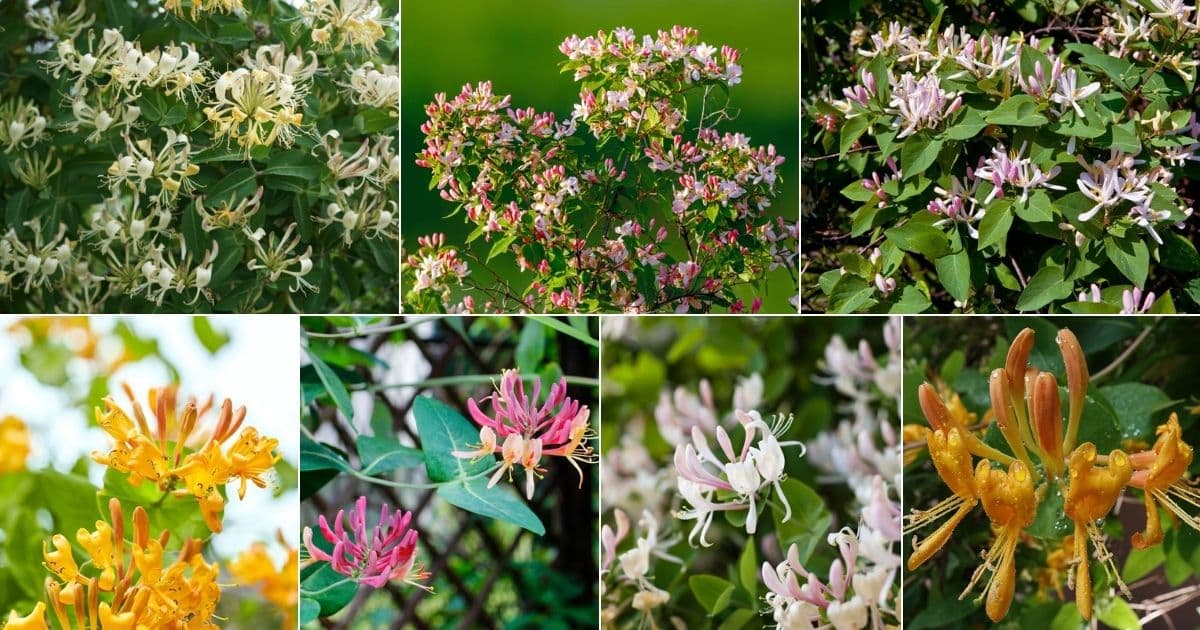
This comprehensive guide will teach you how to care for honeysuckles. You can use the advanced jump below to jump to any section fast.
Jump to:
- What Are Honeysuckles?
- Honeysuckle Basics
- Where Do Honeysuckles Grow?
- Are Honeysuckles Invasive?
- Why Grow Honeysuckles?
- Honeysuckle Landscaping Ideas
- Recommended Honeysuckle Varieties
- When Do Honeysuckles Bloom?
- How Long Do Honeysuckles Bloom?
- When to Plant Honeysuckles
- Ideal Growing Conditions for Honeysuckles
- How to Plant Honeysuckles
- How to Care for Honeysuckles
- How to Divide and Transplant Honeysuckles
- Recommended Planting Combinations for Honeysuckle
- Frequently Asked Questions About Growing Honeysuckles
- Where to Buy Honeysuckles
What Are Honeysuckles?
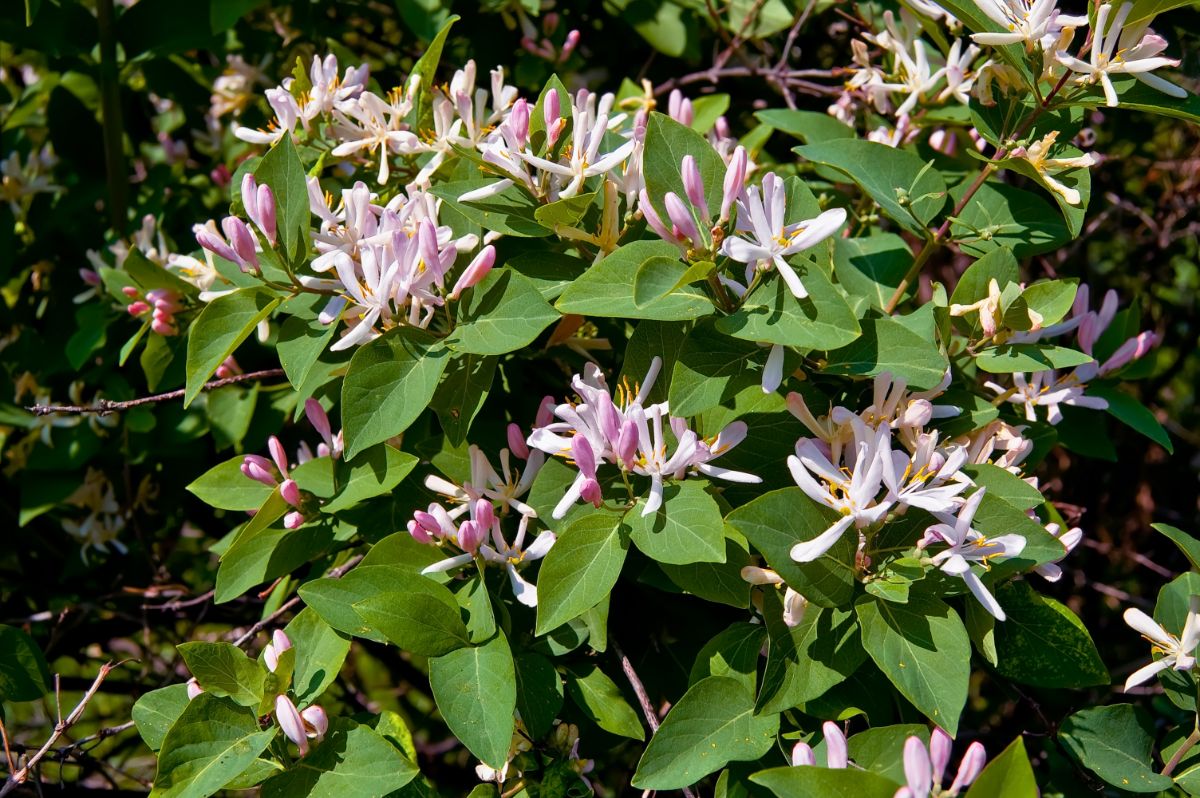
Honeysuckle plants belong to the genus Lonicera and the family Caprifoliaceae, with around 180 species in total. They may be either perennial shrubs or vines.
These plants bloom every year, attracting hummingbirds and other pollinators, and may live for decades with minimal care.
Honeysuckle Basics
| Zones: | 4-9 |
| Blooming season: | Mostly spring, sometimes summer and fall |
| Expected height: | Up to 20 feet |
| Soil: | Rich, well-drained |
| Sun: | Full to partial |
Where Do Honeysuckles Grow?
Honeysuckle plants are native to Eurasia and North America, and can grow anywhere in zones 4-9.
Are Honeysuckles Invasive?
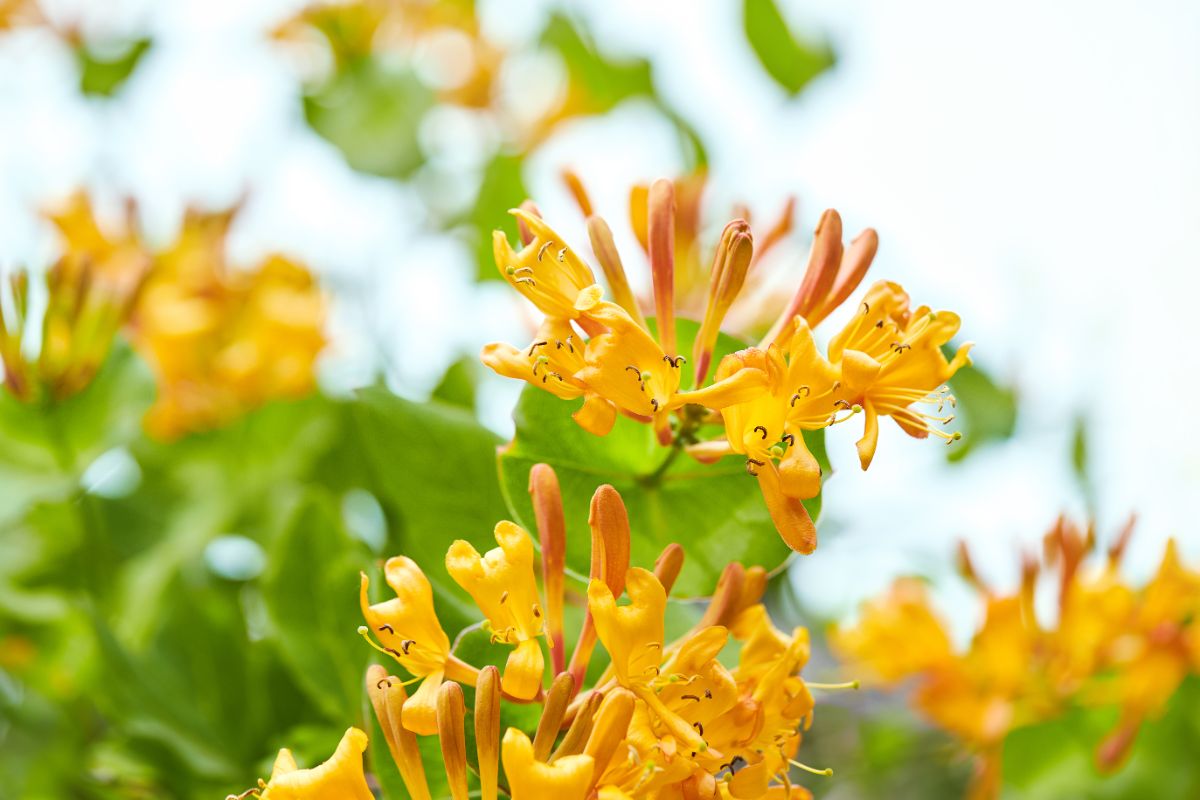
While honeysuckles are cultivated on purpose, there is a catch with them, and that is that in many regions, they are considered to be invasive.
That being said, not every species of honeysuckle is considered invasive in every area. For example, Horticulture magazine points out that coral honeysuckle vine can be non-invasive.
Here is another article in the Boston Globe in which an expert assures a concerned reader that Alabama Crimson honeysuckle is native and safe to grow.
Additional examples of native honeysuckles can be found here. The Missouri Botanical Garden writes, “Unlike the Asian bush honeysuckles, our native honeysuckles in Missouri (members of the genus Lonicera) are all vines. There are three native vining honeysuckles in Missouri (grape honeysuckle (L. reticulata), yellow honeysuckle (L. flava), red honeysuckle (L. dioica) and the cultivated coral honeysuckle (L. sempervirens), which is native to the Southeastern US and occasionally naturalizes in the Saint Louis region.”
On the other hand, the plant called Japanese honeysuckle is widely invasive, and is one you should probably stay away from.
What you will need to do if you want to plant honeysuckle in your garden is start by looking up a list of types of honeysuckle that are considered invasive and non-invasive for your region. Be sure to plant an appropriate species that will not take over.
If you are not sure why it is important to not contribute to the spread of invasive species of honeysuckles, take a look at the info at the bottom of this page.
If you already have honeysuckle in your garden, you can take care of it and try to manage it so that it does not spread. Keep it under control and you can enjoy the flowers and pollinators.
Why Grow Honeysuckles?
Here are some reasons to grow non-invasive honeysuckles in your garden:
- It is super easy. Honeysuckles are low-maintenance, hardy plants that can thrive with little attention.
- Depending on the group your honeysuckle belongs to, you might not need to do much or any pruning. In many locations, it also is not necessary to do a lot of watering.
- Pollinators love honeysuckle. You can look forward to welcoming butterflies and hummingbirds to your garden during the day. At night, nocturnal moths may delight in the nectar of your honeysuckles.
- These plants smell as gorgeous as they look. Many people grow them as much for their fragrance as for the appearance of their blooms.
- Honeysuckles bring a romantic atmosphere to your garden. You can use them to dramatically enhance your landscaping by growing the vines up a trellis, pillar, etc.
- Some people enjoy the nectar of honeysuckles.
- Birds like the berries. You cannot eat them, but you can enjoy watching as the birds dig in.
- Growing honeysuckles is practically effortless. Seriously, if anything, they are hard not to grow in some locations.
Honeysuckle Landscaping Ideas
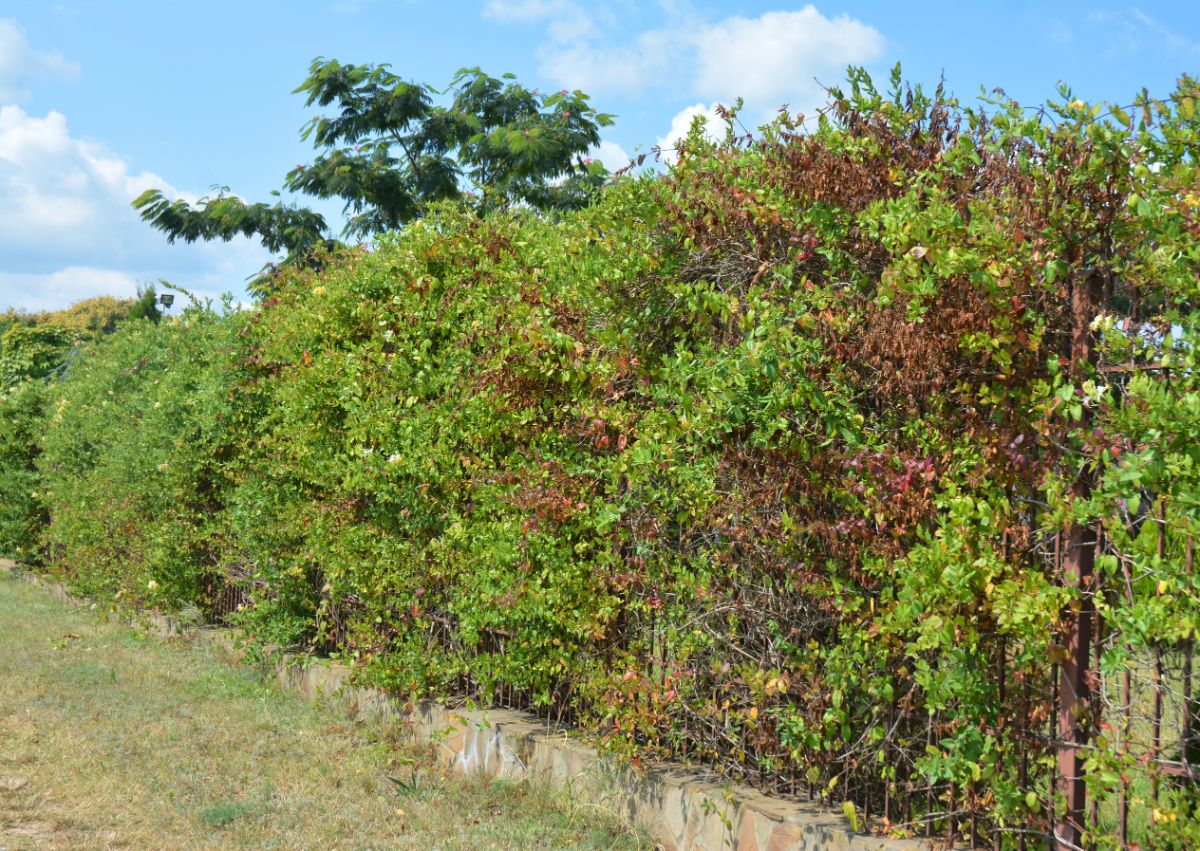
Here are a few ideas for how you can grow honeysuckles as ornamental plants:
- Over a fence: This attractive plant can help to cover up an unsightly fence or increase your privacy.
- On a trellis arch: Try growing honeysuckle vines over a trellis arch for a dramatic addition to your garden.
- Up a wall: Fragrant honeysuckle plants can climb up a wall with a bit of help from a supporting trellis, enlivening an otherwise drab surface.
- In a pollinator garden: These scented flowers can work perfectly planted among other pollinator garden favorites.
- In a cottage garden: The abundant flowers and foliage of this attractive plant can help to fill out space in a cottage garden.
- By your porch: If you grow a honeysuckle up one of the posts of your porch, you can enjoy a bit of shade as well as the beautiful fragrance of the flowers.
Recommended Honeysuckle Varieties
Let’s explore some types of honeysuckle that are popular in perennial gardens:
- Scentsation: The yellow flowers of this cultivar of honeysuckle produce a delightful fragrance. The berries are an appealing red color. At its maximum height, it can reach around 10 feet tall.
- Rhubarb and Custard: You will see immediately where this beautiful cultivar of honeysuckle gets its name when you behold its blossoms in white, yellow and pink. It is a long-bloomer, producing flowers and fragrance from summer through the early part of autumn. It also is a favorite among bees.
- Alabama Crimson: This cultivar produces tubular flowers with a bold crimson hue together with blue-green foliage.
- American Beauty: Similar to Rhubarb and Custard, this cultivar produces multi-hued blossoms. They start out pink and then open to reveal peachy petals.
- Winchester: The deep reddish-pinkish color of these honeysuckle blossoms will catch your eye in a way few others can.
- Peaches and Cream: The flowers on this cultivar start out with a mixture of white and dark pink, but over time, they become peachy. If you have been looking for a compact cultivar, it is a great option.
- Heaven Scent: With a name like “Heaven Scent,” you just know this cultivar is going to have an amazing fragrance! The flowers are yellow initially, and then fade to a salmon hue. It is popular in cottage gardens, and beloved by birds for the red berries it produces.
- Graham Thomas: Looking for a fast-growing honeysuckle? This is one of the best options out there. The flowers are a creamy yellow color.
- Honey Baby: This is a compact cultivar of honeysuckle that produces creamy flowers that send a lovely fragrance across your garden in summer. Another name for the same cultivar is “Blond and Beyond.”
- Strawberries and Cream: It is easy to visualize this honeysuckle from its name, which refers to its white and pink blossoms.
- Mandarin: The flowers on this cultivar are pink and peach, and the leaves start out with a brownish color before turning green.
When Do Honeysuckles Bloom?
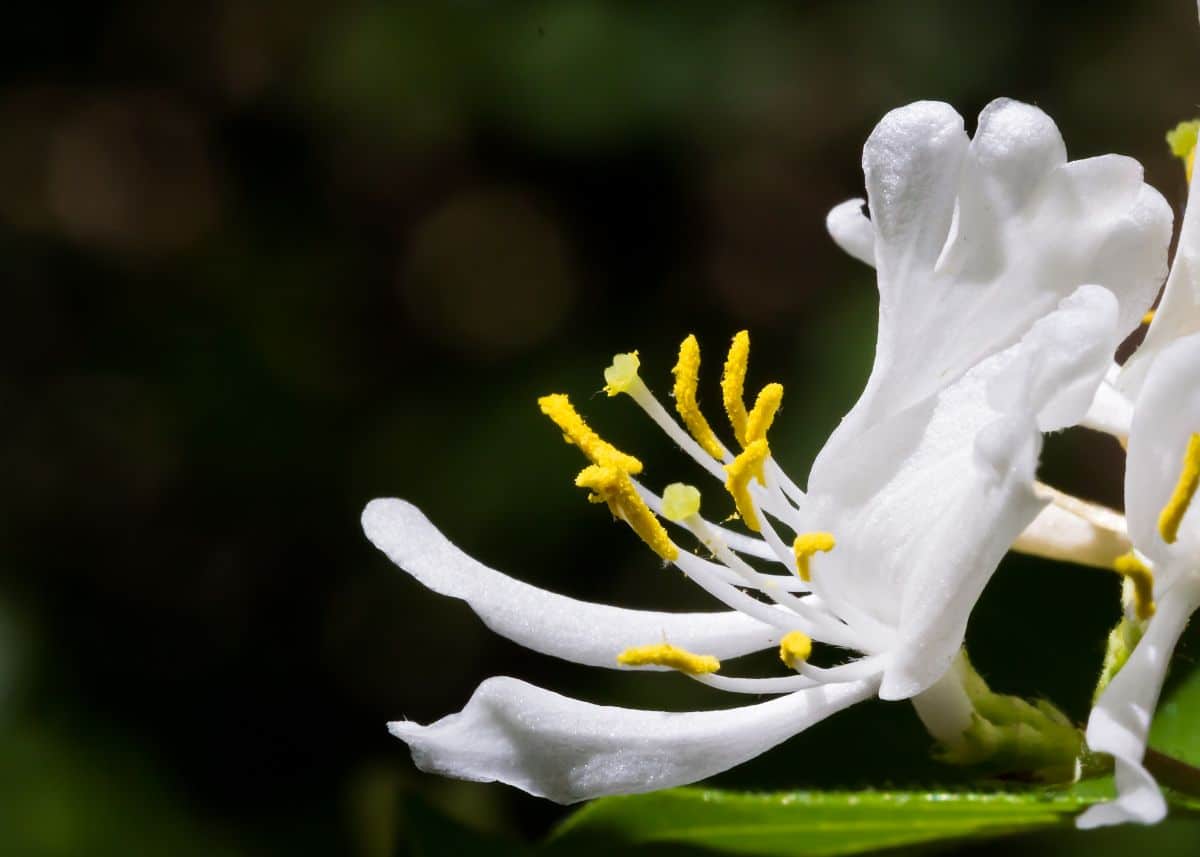
Honeysuckles start blooming in spring, and may blossom into summer. There are some fall-blooming varieties. In sufficiently warm climate zones, honeysuckles might blossom all year.
How Long Do Honeysuckles Bloom?
Honeysuckles often produce blooms for months, so they can offer a lot of enjoyment every year.
When to Plant Honeysuckles
As is true with many other perennials, the best seasons for planting honeysuckles are spring and fall. When planting in spring, make sure that all danger of frost is past.
Ideal Growing Conditions for Honeysuckles
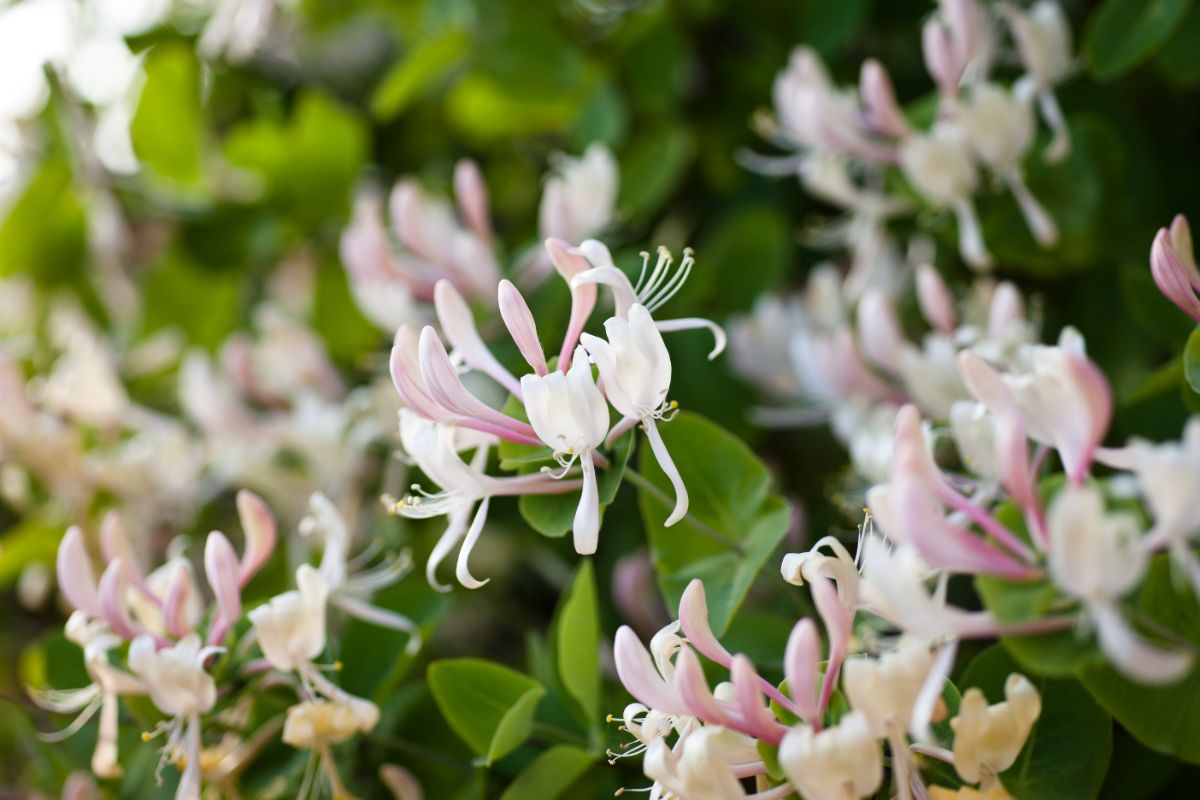
Honeysuckles will do best if you plant them in conditions where they will be happy. Below, we go over the sun, soil and water requirements for these plants.
How Much Sun Do Honeysuckles Need?
You should find a sunny location for your honeysuckles. It is okay if there is a little shade, but it is better if there is not.
One thing to note, however, is that it is best if the roots of the honeysuckles are able to remain cool. So, if there is a way you can get their feet in the shade but still allow plenty of sunlight to reach the stems and leaves, that is ideal for their growth.
What Type of Soil is Right for Honeysuckles?
Honeysuckles prefer a moist, well-drained soil type. It is important for them not to have wet feet, but also not to dry out.
Rich soil is better for these plants than poor soil. Moderately alkaline soils work great, but you also can grow honeysuckle successfully in acidic soils.
How Much Water Do Honeysuckles Need?
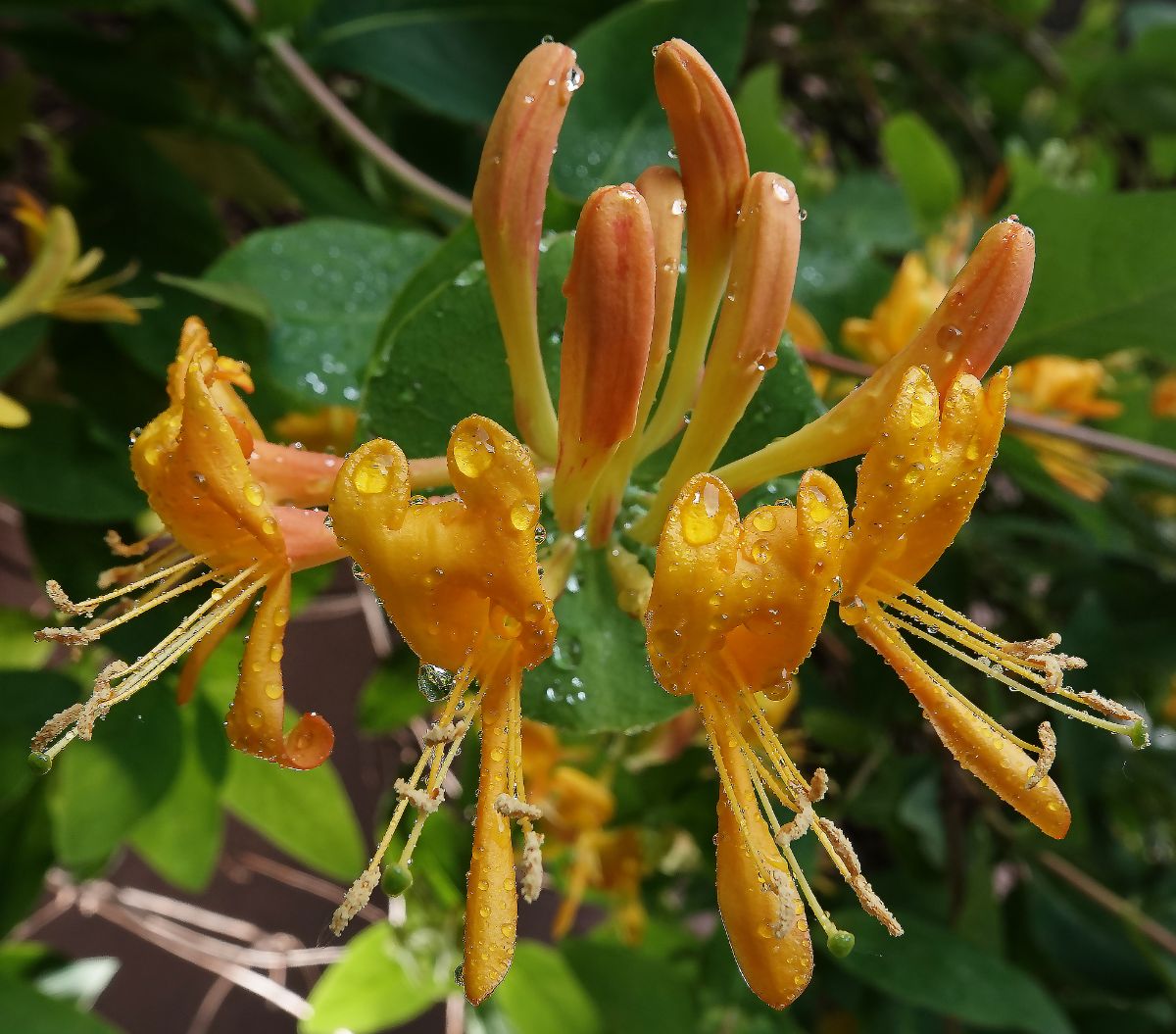
You should do your best to keep the soil moist around your honeysuckle. Like other perennials, honeysuckles need some extra water when they are establishing.
Wilson Bros Gardens says, “In average garden soil you should not have to water your newly planted Honeysuckle vine every day. More often than not, this causes soggy soil conditions that can lead to root rot and other plant diseases. In the absence of sufficient rainfall, water only as needed to keep the root ball and surrounding soil damp to moist.”
The shop also cautions gardeners against overwatering honeysuckles planted around wintertime. They are not as thirsty during this time since they are dormant, and if you overdo it, you could kill them.
What is awesome is that once you have established your honeysuckles, they should not need a lot of additional water from you. Often, precipitation is sufficient.
Wilson Bros Gardens writes, “Only during prolonged periods of summer drought will plants require supplemental irrigation. If you see leaves wilting or dropping from the vine this is an indicator your plant could use a good deep soaking.”
How to Plant Honeysuckles
Most of the time, you grow honeysuckles from nursery plants—or you simply raise honeysuckles that are already on your property (perhaps they spread from nearby).
It is possible to also propagate honeysuckles from seed or cuttings. We will discuss that after we teach you how to grow honeysuckles from nursery plants in flower beds or containers.
Container Planting
Growing honeysuckles in container gardens is a little harder than growing them in your garden beds, but it is not too challenging. The time to plant is spring.
- Pick a container. Honeysuckle plants require large pots with drainage holes. The roots like to spread out, and the more space you give them, the happier the plant will be.
- Fill the pot up to halfway with compost.
- Carefully remove the honeysuckle nursery plant from the container it came in. Then, place it inside its new home.
- Backfill and gently tamp down as you do.
- Water deeply after planting. If the soil settles, you may need to add a little more.
- Chances are good the plant you are growing is a vine. That means it is going to need something to climb up. A variety of options can work, but one example would be a trellis. Provide this support immediately after you plant so that the honeysuckle can get off to the right start.
- Choose a location for your honeysuckle to live.
Remember, as perennials are establishing, they need extra water. That is especially true for those in pots since the soil can dry out faster than it would in your flower beds.
Ground Planting
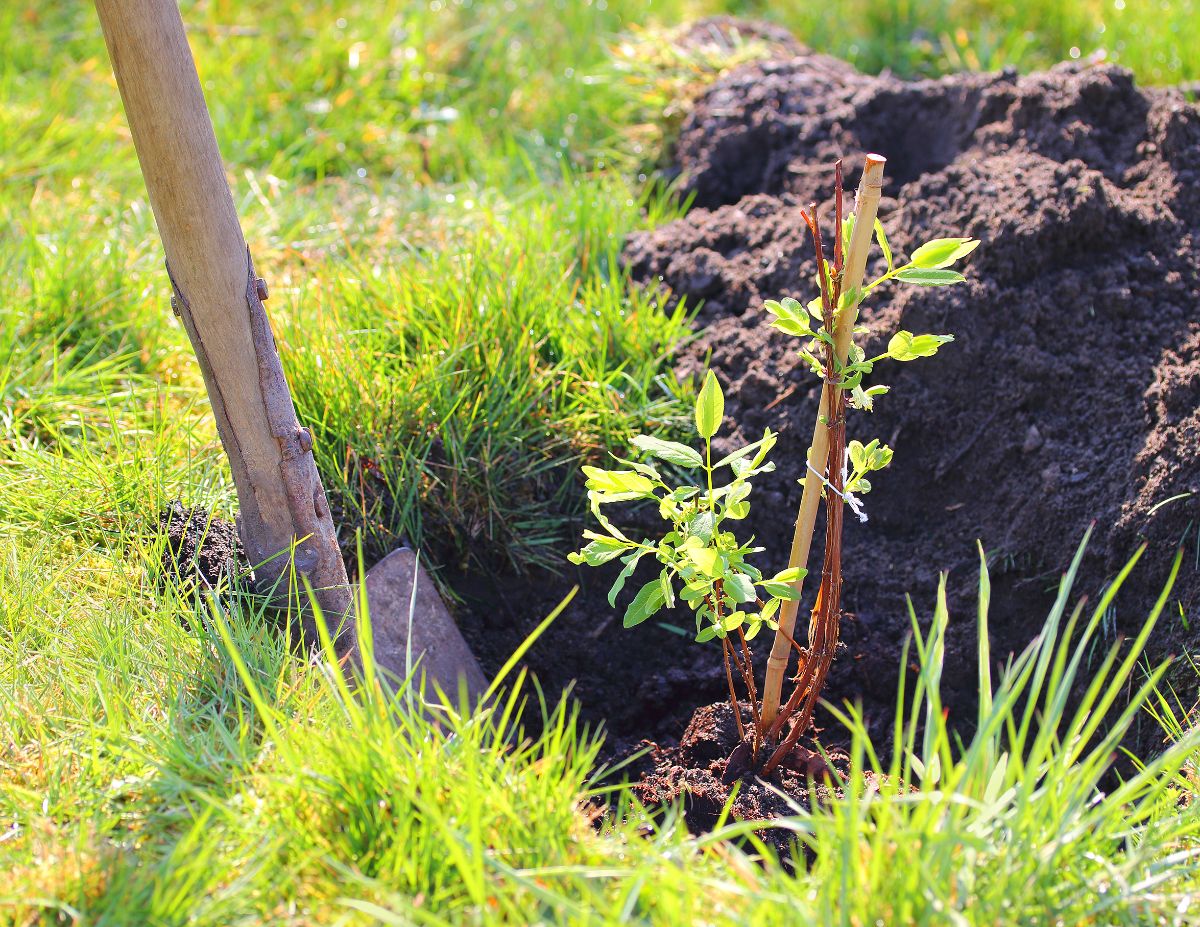
- Carefully select a location where the honeysuckle will be happy and you can train it to enhance your landscape.
- Get the soil ready. This might involve mixing in some compost to add nutrition and improve drainage. This step is most important if you have heavy clay soil. With sufficiently fertile soil, you may not require such amendments so long as drainage is adequate.
What if you have sandy soil that drains too fast? Compost can help you out here as well. Alternately, you could go with some peat moss.
- Set up your trellis or whatever other support structure you have decided to use. You want to do this first, before the plant goes in the ground. That way, there is no chance of harming the roots when you push the structure into the soil.
- Dig a hole for your honeysuckle. Space it about half a foot to a full foot away from your trellis, etc.
- Take the honeysuckle out of the nursery plant container in which it arrived, taking care that you do not harm the roots in the process.
- Was the plant root bound? If so, loosen up the roots a little bit so that they can spread out more easily.
- Plant the honeysuckle in the hole. Backfill the soil.
About halfway through the backfilling process, pause and water. Then, finish backfilling. Make sure you are tamping down as you work.
The correct height for the top of the root ball is either level with the ground or just above it. The very top should remain exposed.
- Even though you already did some watering, you should now do so again.
Starting Honeysuckles from Seed
The exact instructions to propagate honeysuckles from seeds may vary depending on the exact variety of honeysuckle and individual techniques. But here is the general approach:
- Look for some overly ripe fruits on your existing honeysuckle plants. Open them up and remove the seeds.
- Rinse off the seeds. Then transfer them to a paper towel and let them air dry.
- Cold stratify your seeds. You can do this by putting them in a Ziploc bag along with some moistened sphagnum moss. Put this in the fridge and wait for a couple of months. Check regularly on the contents of the bag. If they are drying out, then get the moss moist again. But make sure it is never drenching wet when you seal it in with the seeds. If it is too wet, rot will result.
- Get some small pots with drainage holes and fill them with seed-starting compost.
- Moisten the compost, but let it drain.
- Plant the seeds ⅛th inch down.
- Choose a sunny location for the seeds to germinate. The ideal temperature is 60 degrees Fahrenheit.
- Regularly mist the soil using a spray bottle if it is drying out.
- When the seedlings have started producing true leaves, transplant them into larger pots with potting soil.
- Eventually, the seedlings will be well-developed enough that you can transplant them to their permanent locations. To get them used to life outside, harden them first. Then, plant them.
Starting Honeysuckles from Cuttings
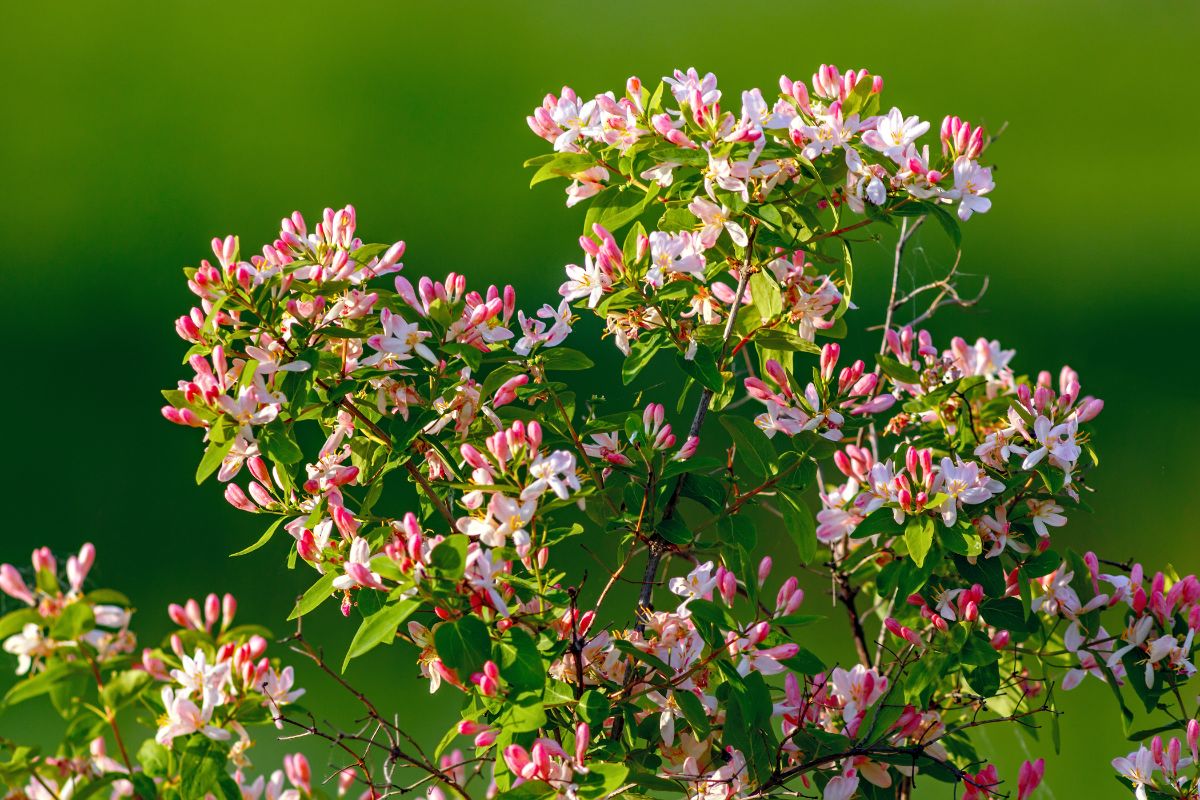
- Before the stems are blooming, use sanitized garden shears to remove cuttings from fresh growth. This will probably be late in spring, but in some locations and with some honeysuckles, it could be early summer. The ideal time of day to do this is early in the morning.
- Under a leaf node, taking a cutting measuring 6-8 inches. Gather a few cuttings in this way.
- Take off the lower leaves from your cuttings. Leave the top leaves alone.
- Use your knife to carefully scratch off the outer part of the stem down at the bottom of each.
- Dip each cutting in rooting hormone.
- Fill small containers with potting mix. Insert the cuttings into the potting mix.
- Get the potting mix moist with a spray bottle.
- Use a plastic jug or bag to cover each of the containers. Prop it up so that it does not touch the plants.
- Monitor your cuttings, moisten the soil when needed, and wait for them to grow roots.
- After the roots are sufficiently developed, you can harden and transplant the cuttings outdoors.
How to Care for Honeysuckles
Now that you know how you can plant and propagate honeysuckles, you are ready to find out how to maintain them, including instructions for fertilizing, pruning and more.
How to Fertilize Honeysuckles
Honeysuckles appreciate an application of balanced, general-purpose fertilizer. The best time to provide this fertilizer is right around when you start seeing fresh growth in springtime.
You can calculate how much fertilizer you need by measuring how tall the honeysuckle is. For every foot, you need a tablespoon.
After you add the fertilizer to the soil, water the plant. This will help to distribute the fertilizer among the roots.
How to Mulch Honeysuckles
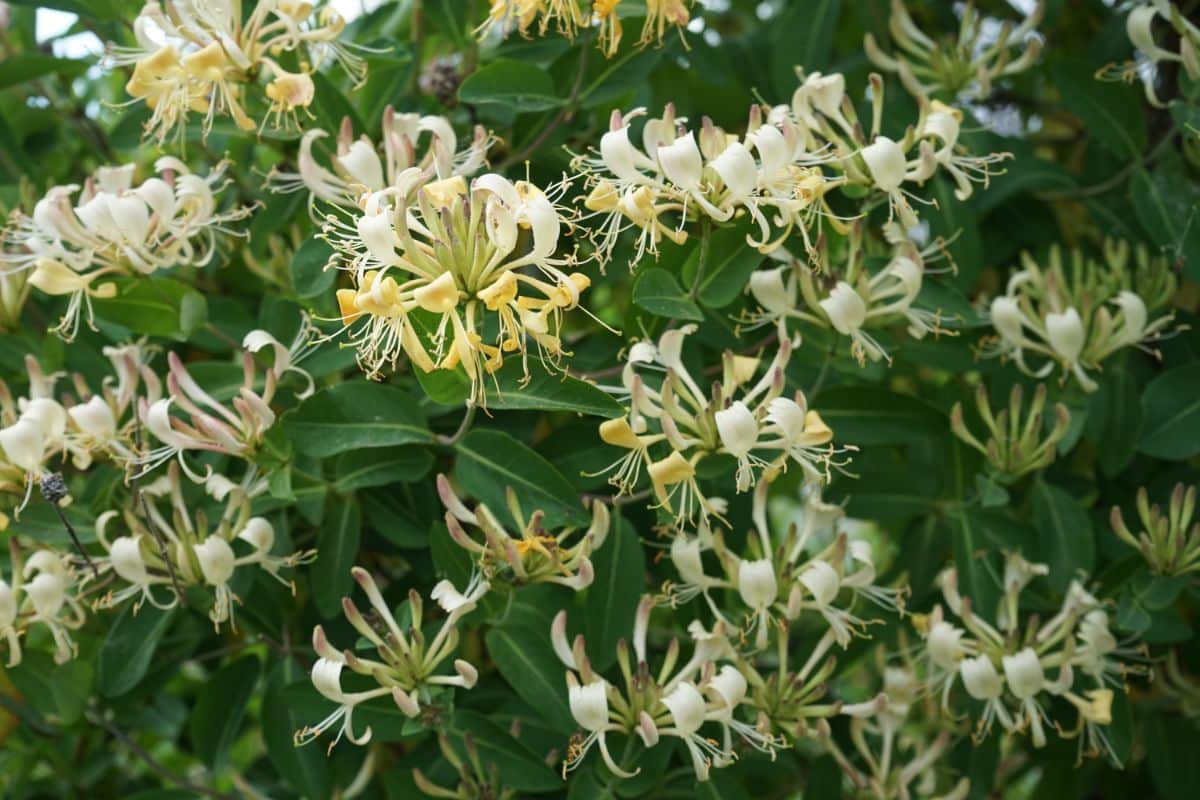
Mulching can be good for honeysuckles since it helps to keep weeds at bay and lock moisture into the soil.
The layer of mulch should be about an inch, and should consist of an organic material such as shredded leaves, bark mulch or compost.
Mulch once during springtime, and again during fall. Do not place the mulch too close around the base, or you could risk mold.
How to Stake Honeysuckles
We have already discussed a bit about training honeysuckles to grow on trellises, pergolas, and so forth.
Vines may sometimes latch onto these surfaces without help, but not always. If your honeysuckle is not clinging to the trellis you are using, you can help out by carefully tying the vines.
Wilson Bros Gardens says, “The vines should be tied to the support using stretchy materials such as plastic tie tape or nylon hosiery that won't cut into growing branches. To keep stems from rubbing on supports, it's best to loop each tie into a figure 8, with the crossed portion between the stem and the support.”
How to Prune Honeysuckles
Honeysuckle pruning is a complex topic. Basically, different types of honeysuckles are sorted into different groups. Which group a variety belongs to determines its pruning needs, which an vary widely from group to group.
Horticulture magazine gives a couple of examples. Lonicera Fragrantissima, for instance, belongs to group 2. You may not need to prune this variety of honeysuckle at all.
Lonicera japonica ‘Halliana’, by contrast, is a member of group 11. It requires regular pruning since the works can otherwise get clogged up by too many stems and shoots.
Certain types of honeysuckles also need what is called “renovating.” Royal Horticultural Society offers these instructions for renovating:
“Prune in late-winter. Cut back all of the stems to a height of 60cm (2ft) and it will respond with plenty of new shoots. Choose the strongest and best placed stems to re-create a framework to cover your support. This is a useful method for re-starting a honeysuckle that has become very congested and bare at the bottom.”
So, the key is to look up which group your honeysuckle variety belongs to, and then check the requirements for that group. You will then know what you need to do to keep up with pruning.
How to Deadhead Honeysuckles
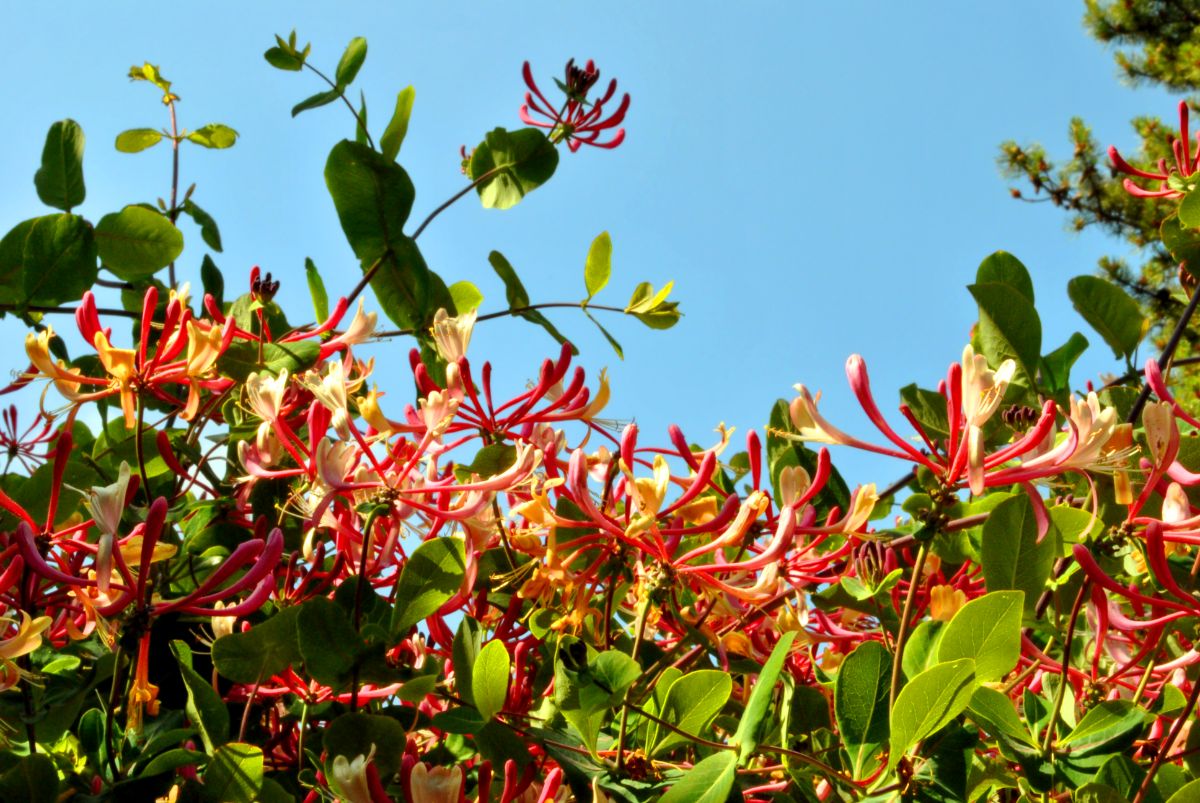
Depending on the type of honeysuckle you are growing and your objectives, you might actually want to avoid deadheading.
The Royal Horticultural Society explains, “Remember to leave on the browning flower heads to encourage berries for extra interest and as food for the birds.”
How to Divide and Transplant Honeysuckles
You can divide honeysuckles in the springtime.
- Start by deeply watering the honeysuckle. Take care of this the night before you plant to do the division. It will help to soften up the soil, and will get the plant ready for the stressful event.
Now, normally with perennials, you would dig up the entire root ball, but with a honeysuckle, you are not going to do that.
- Start by finding a healthy sucker on the plant.
- Dig into the soil carefully and find where the sucker connects to the rest of the planet. Use a knife to cut it off.
- Remove the sucker and the part of the roots attached to it from the soil.
- Backfill around the original plant and water well.
- Transplant the sucker so it can grow.
Dividing honeysuckle is not something a lot of gardeners do, as other propagation techniques work better!
You can view more detailed instructions here.
Are Honeysuckles Vulnerable to Diseases or Pests?
Sometimes, honeysuckles may suffer from diseases such as leaf blight, powdery mildew, crown gall, canker diseases, and sudden oak death.
Some types of honeysuckles are less likely to become diseased than others. For example, trumpet honeysuckle is less prone to these problems.
There are some garden pests that can be problems for honeysuckles. Sometimes, they may be targeted by aphids, European honeysuckle leafrollers and snowberry clearwings, honeysuckle sawflies.
As for slugs and snails, we did not find any clear references to these plants being slug-resistant or slug-attracting.
While there is no such thing as a wholly deer-proof plant, honeysuckles are deer-resistant. In fact, you can even plant types of honeysuckle that are especially renowned for their deer-repelling powers, such as North American Coral honeysuckle.
Alas, this property of honeysuckle does not extend universally to all mammals. In fact, rabbits getting into honeysuckles is relatively common.
Recommended Planting Combinations for Honeysuckle
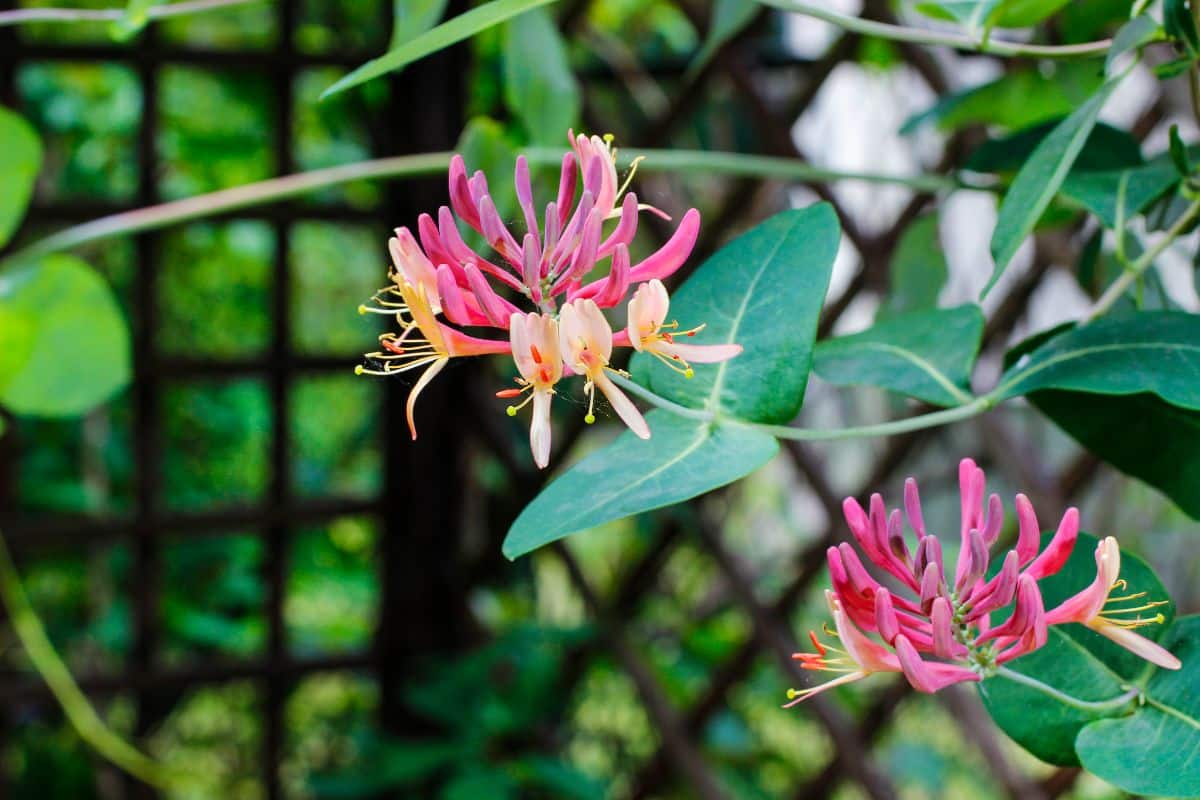
Here are some plants that can go well with honeysuckle in your garden:
- Sweet rocket: Hesperis matrionalis, also known as “sweet rocket,” likes full sun just like honeysuckle, and looks lovely climbing alongside it. Both plants produce sweet fragrances that together create a beautiful perfume.
- Roses: Honeysuckles and roses can climb nicely together so long as you do not pick an overly aggressive honeysuckle that overwhelms the roses. Also, it may be to your advantage to choose a rose that requires minimal or no pruning, as otherwise the honeysuckle may get in your way.
- Ground Flowers: It is easy to get preoccupied with climbing plant combinations. But do not forget that honeysuckle can make for a nice backdrop in front of other perennials that are low to the ground.
Frequently Asked Questions About Growing Honeysuckles
Since deer do not typically eat honeysuckles and slugs and snails are not commonly a huge problem, rabbits or insects are probably responsible for munching on your honeysuckles.
Honeysuckle plants are perennials. They bloom every year.
Do not let your pet eat honeysuckle! Rover.com says, “All parts of the honeysuckle, including the vine, flower, and berry, are poisonous to dogs, who can not properly digest the plant’s toxic properties, consisting of cyanogenic glycosides and carotenoids.”
The symptoms the site lists for poisoning in dogs include digestive issues, irregular heartbeat, excessive thirst, coma and death. So, it is very toxic.
Honeysuckle and cats gets complicated. There is a compound in honeysuckle that produces a catnip-like effect on felines. Indeed, you can sometimes find cat products containing honeysuckle.
The trouble is that there are varieties of honeysuckle that are toxic to cats. If you try to give your cat the wrong type of honeysuckle on accident, you could end up poisoning your pet.
For that reason, we recommend that you never give your cat honeysuckle from your garden. It is not worth the risk. Just stick with sprays and toys that were made to be safe for cats.
You cannot eat the berries of honeysuckles, but you can eat the flowers. The berries are toxic.
Some people (especially children) like to drink the sweet nectar out of the flowers.
Some people do use honeysuckle medicinally, but WebMD has no information on its efficacy, and lists it as “possible safe” within certain parameters. So, the jury is out on this one.
No, honeysuckles do not have thorns on them.
Where to Buy Honeysuckles
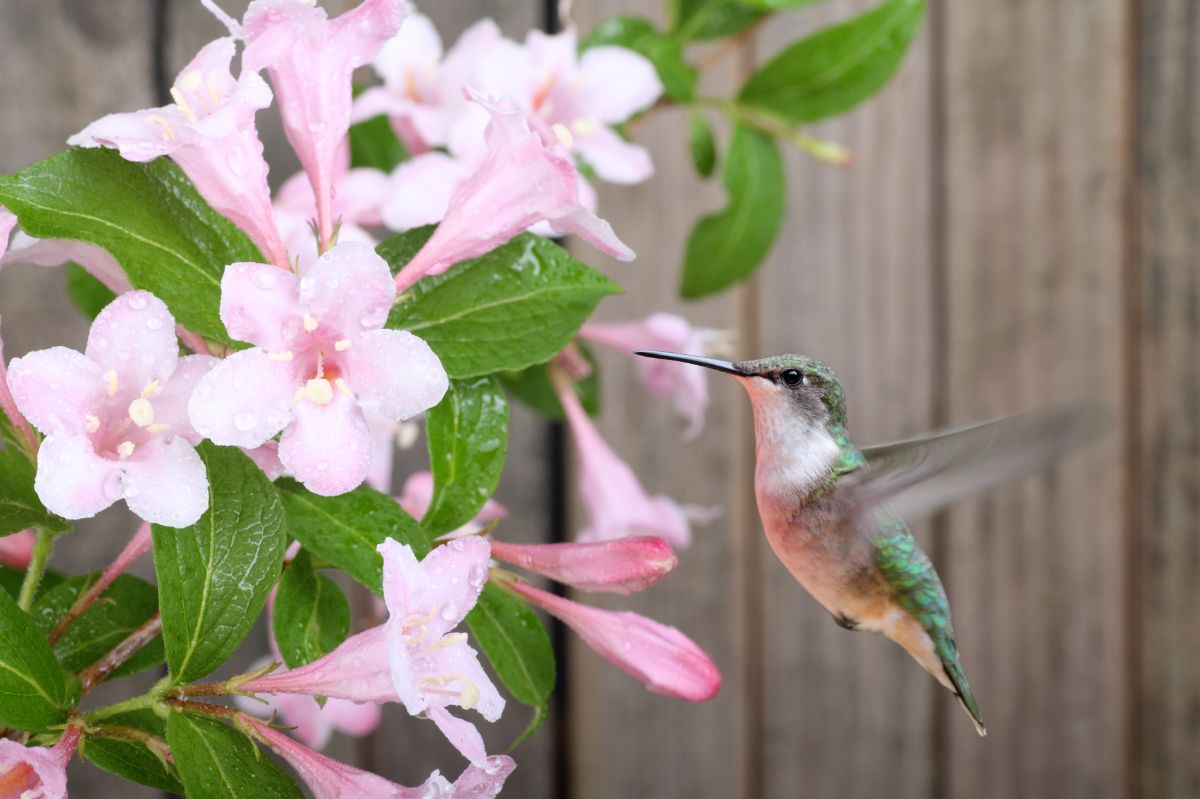
If you are ready to grow non-invasive types of honeysuckle in your garden, you can shop at the link below for perennials to plant.

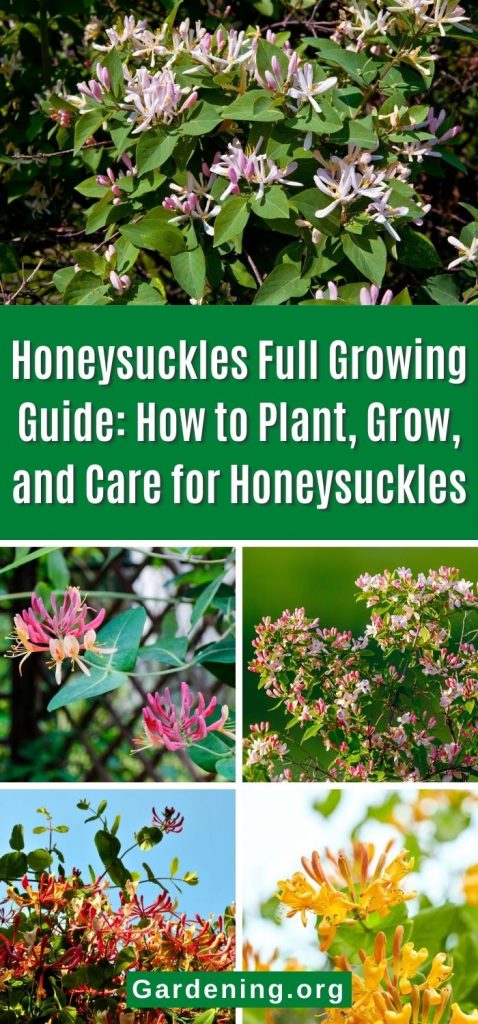
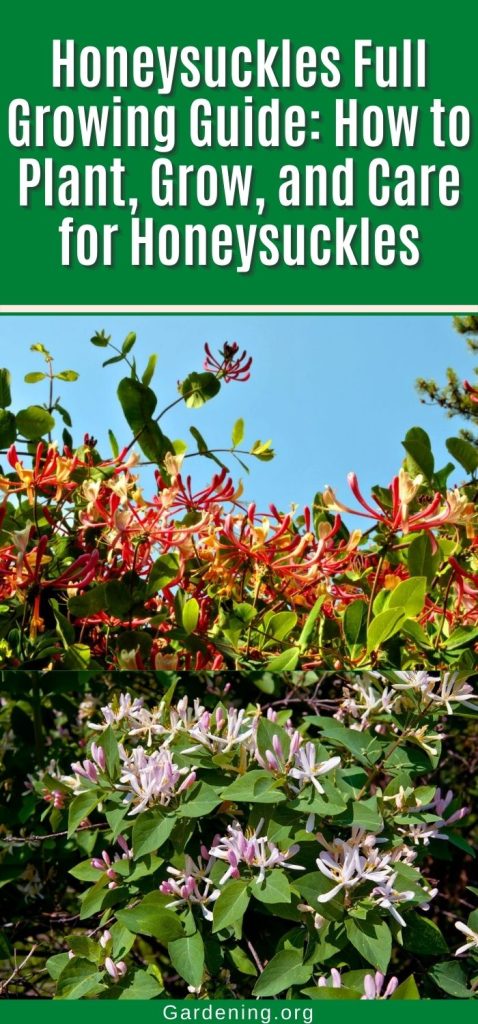
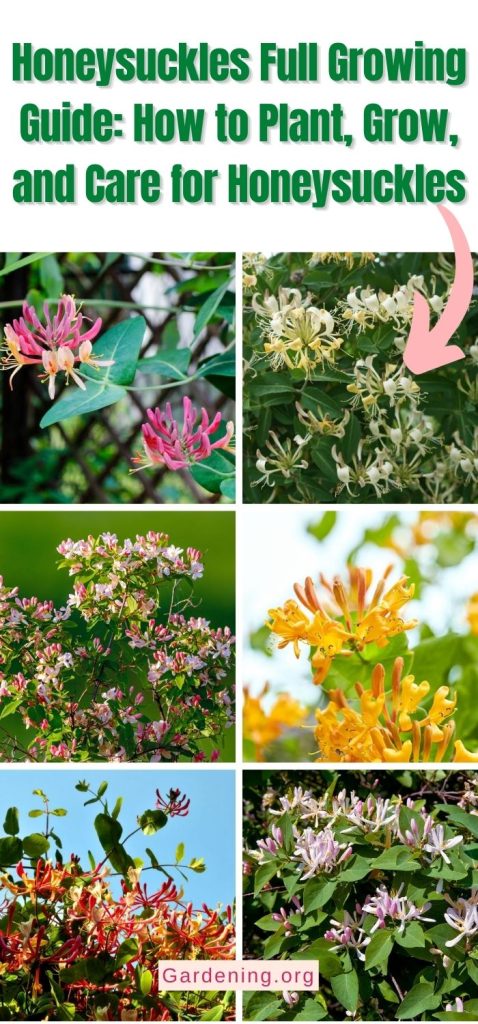
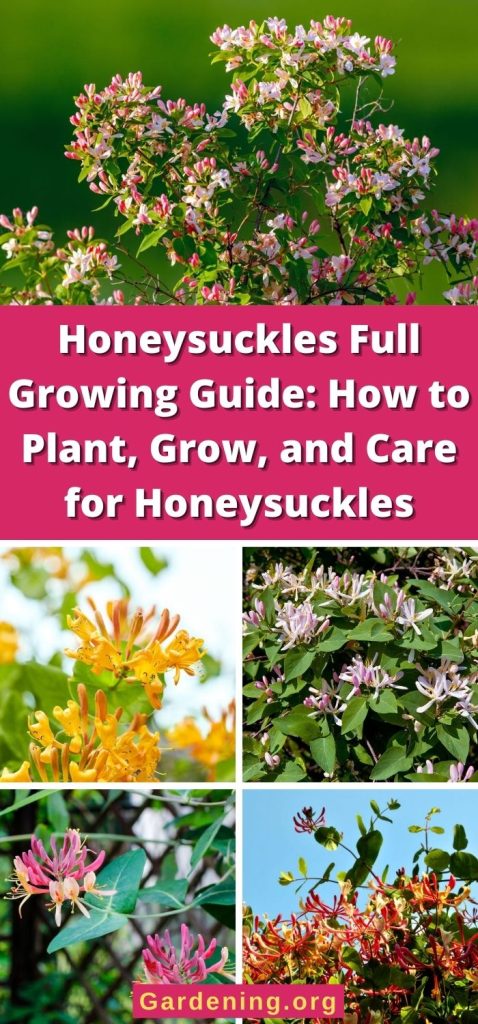
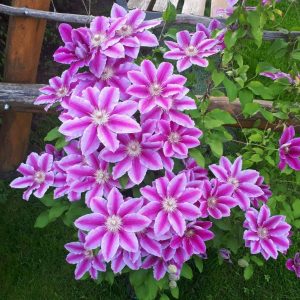
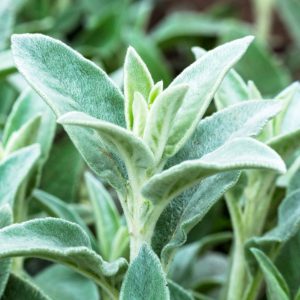
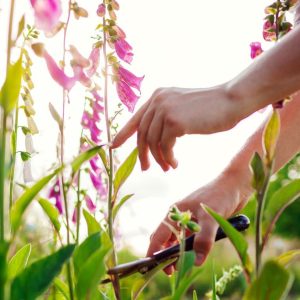
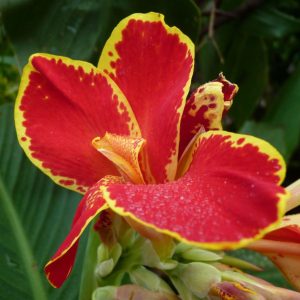
Leave a Reply